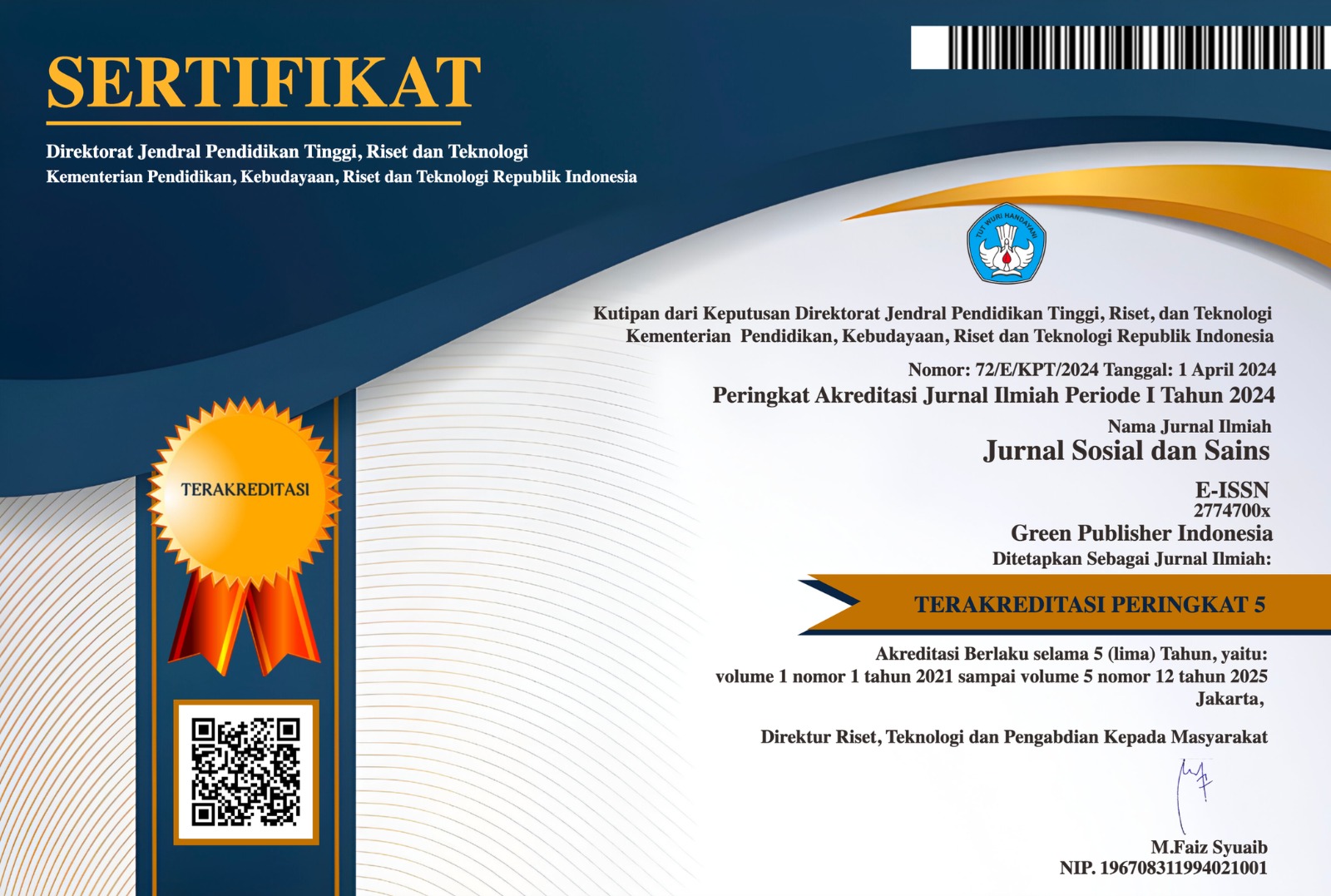Retinitis Pigmentosa: A Case Report
DOI:
https://doi.org/10.59188/jurnalsosains.v2i2.355Keywords:
Retinitis pigmentosa, Nyctalopia, Visual impairmentAbstract
Background : Retinitis pigmentosa is an inherited heterogeneous group of retinal disorders represented by rod photoreceptors progressive dysfunction with subsequent cone photoreceptors degeneration and the retinal pigment epithelium. The typical manifestations are progressive loss of visual field and night blindness. Purpose : The purpose of this study was to examine with the Amsler Grid on the right and left eyes, no scotomas and metamorphopsia were found. Method : The type of research is quantitative with an explanatory research approach, the sampling technique is saturated sampling with the number of subjects 76 employees and the data analysis technique uses PLS. Results : Best corrected visual acuity was 6/9 in the right eye and 6/18 in the left eye. There was arteriolar attenuation, waxy disc pallor, bone-spicule pigmentation and pigment deposits on both eyes in funduscopy exaination. The patient was diagnosed with retinitis pigmentosa. The management given was vitamin A 15.000 IU/day, DHA 1.200mg/day, and counselling about retinitis pigmentosa, progressivity, and prognosis. Conclusion : Retinitis pigmentosa caused irrreversible visual and visual field impairment. Low vision management for retinitis pigmentosa was to optimize the visual function and optimized quality of life. Genetic counselling might provide the patient and her family information of the inheritance and genetic disorders implications that could help the patient to obtain medical information regarding the disease.
Published
How to Cite
Issue
Section
License
Copyright (c) 2022 Delfi Delfi, Vanda Virgayanti , Rika Ramadhani Sinambela

This work is licensed under a Creative Commons Attribution-ShareAlike 4.0 International License.
Authors who publish with this journal agree to the following terms:
- Authors retain copyright and grant the journal right of first publication with the work simultaneously licensed under a Creative Commons Attribution-ShareAlike 4.0 International (CC-BY-SA). that allows others to share the work with an acknowledgement of the work's authorship and initial publication in this journal.
- Authors are able to enter into separate, additional contractual arrangements for the non-exclusive distribution of the journal's published version of the work (e.g., post it to an institutional repository or publish it in a book), with an acknowledgement of its initial publication in this journal.
- Authors are permitted and encouraged to post their work online (e.g., in institutional repositories or on their website) prior to and during the submission process, as it can lead to productive exchanges, as well as earlier and greater citation of published work.








